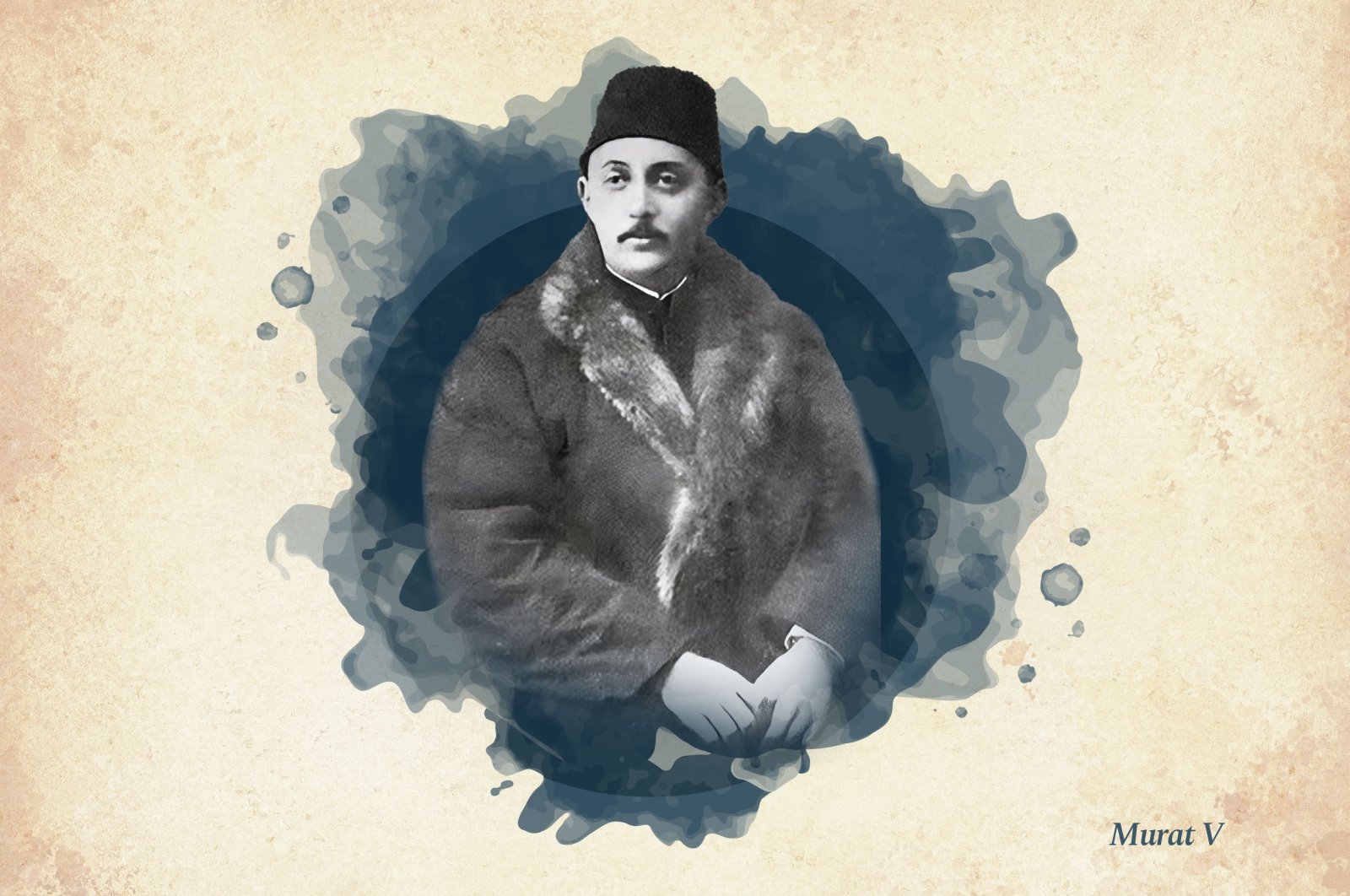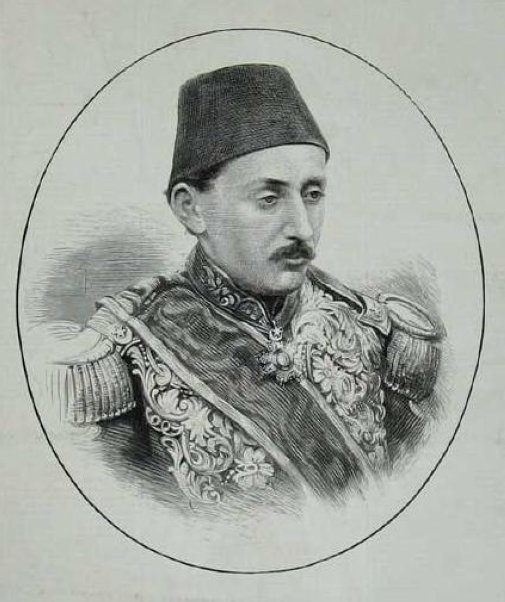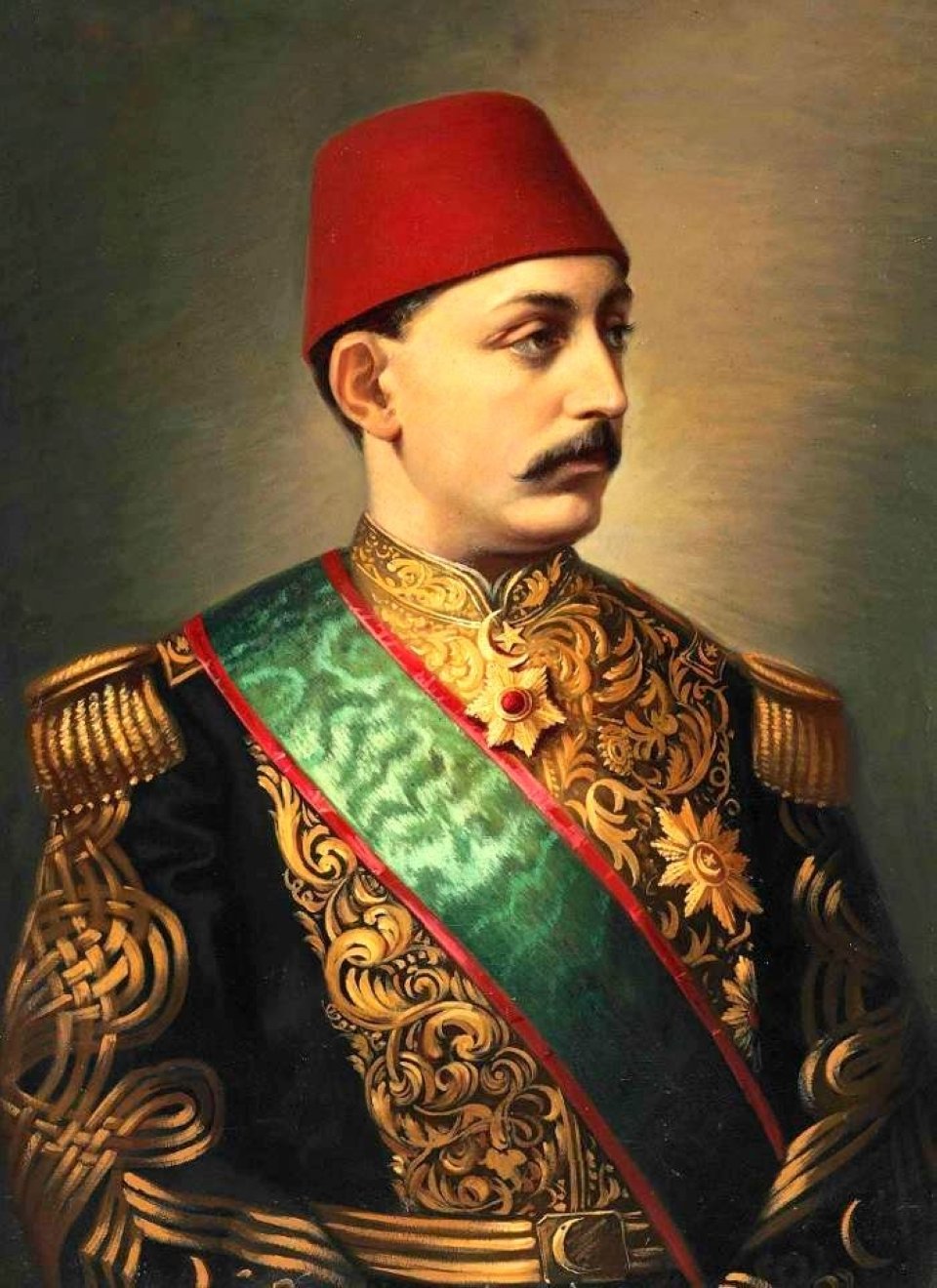
MIGHTY SOVEREIGNS of OTTOMAN THRONE: SULTAN MURAD V
Sultan Murad V was the eldest son of Sultan Abdülmecid. He was born to Şevkefza Kadınefendi in 1842. He received a good education from the famous teachers of the time. He traveled with his father to Thessaloniki and Aegean islands. His brother, Sultan Vahideddin once said, “We were eight brothers; the most valuable among us was Murad; If they put him on one side of the scale and us on the other, the side he is on would weigh heavier.”
According to rumors, Sultan Abdülmecid thought of abolishing the seniority system, which had some drawbacks, and introducing the rule that the throne should pass to the eldest son of the monarch, as in Europe, and to make Şehzade (Prince) Murad Efendi the heir; however, he later abandoned this idea.
Mehmed Murad Efendi became the heir to the throne in 1861 when his father died and his uncle Sultan Abdülaziz ascended the throne. During the time of both his father and uncle, he lived a free life like a European prince.
Sultan Abdülaziz made a trip to Egypt in 1863 and to Europe in 1867. He took with him two of his nephews, Şehzade Murad and Abdülhamid Efendi. Murad Efendi was a calm, charming, gentle, cultured and sensitive young man. For this reason, he was very popular in European palaces and gained sympathy.
Şehzade Murad met Edward VII, the future king of England, when he came to Istanbul in 1862. They were both heirs, and he was one year younger than the Prince of Wales. He made friends with him during his trip to Europe with his uncle. When the prince came to Istanbul in 1869, they met again and corresponded until 1876.
According to the rumors, England had decided to open the way to the throne for Prince Murad Efendi, who was an Anglophile. There was even talk of him marrying Louise, the fourth daughter of Queen Victoria of England. However, Sultan Abdülaziz did not accept the offer – and the princess married John Campbell, Duke of Argyll, in 1871.

The Masonic trap
With the encouragement and advice of the Freemason Prince of Wales, the future sultan was accepted as a member of the Prodos Masonic Lodge in 1872 by his friend Cleanthi Scalieri, one of the founders of the club. Both sides expected benefits from this. The inexperienced and naive prince hoped that when he became sultan, Europe, especially England, would get along well with him. As a matter of fact, most of the European rulers and princes belonged to this influential society. At that time, Freemasonry had no image beyond being a club that supported its members socially.
Instead of the crown office in the palace, Şehzade Murad mostly lived in Nispetiye Pavilion in Bebek and in his mansion in Kurbağalıdere. He started to spend time in the Kurbağalıdere mansion with a circle of friends made up of Young Ottomans such as Ziya Pasha, Namık Kemal and Sadullah Pasha. Namık Kemal gave the name Fikirtepe (meaning idea-hill) to this district because of the intellectual disputes they had here.
This circle of friends tried to provoke the şehzade, whom they had habituated to drinking, against his uncle by instilling the idea of constitutionalism in him. The opponents of Sultan Abdülaziz began to form a circle around Şehzade Murad. The rumor that Sultan Abdülaziz would make his son the crown prince may also have pushed Murad Efendi into this conspiracy.
In 1876, Sultan Abdülaziz, whose recent actions did not please the British, was deposed by a junta founded by civil and military bureaucrats in a British-backed coup. Thus, Şehzade Murad was enthroned on May 30 under the name of Sultan Murad V. Since the throne in Topkapı Palace could not be brought due to the conditions of the coup, he accepted the allegiance on an ordinary throne. Sultan Abdülaziz wrote a mournful and advice-like memorandum to his nephew and said, "I congratulate the throne to the Sultan Abdülmecid family."
The new sultan, known for his extravagant generosity, owed a lot of debt. Moreover, he was in debt to those who enthroned him. For this reason, Sultan Abdülaziz's wealth was plundered and these debts of 1 million liras were paid.

Nervous breakdown
Sultan Murad appointed Ziya Pasha, one of his mentors, as chief secretary. However, Avni Pasha did not allow the new sultan to meet with any of his old friends. So much so that he said, "I escaped from my uncle's hand, and now I have fallen into their hands." The new sultan, who was known as a constitutional monarch, did not agree with the declaration of the constitution and disappointed Mithat Pasha and his friends who had enthroned him.
Then, due to what happened to his uncle, who was murdered, Sultan Murad suffered a nervous breakdown. He was already extremely sensitive. His father had had melancholy at the time. A few days after his accession to the throne, on June 4, 1876, his uncle's death from a slashed wrist came as a shock to him. When Sultan Murad received this news at the table the next day, he remained stagnant for a while. Afterward, he wanted to get up from the table because of his dizziness, but he passed out. He knew about the coup but he didn't want things to get to this point.
Sultan Murad started to act strangely during the first Friday prayer procession, called "Cuma Selamlığı," performed in the Hagia Sophia Mosque. He was going up and down the stairs. Later, he began to show extreme affection, which amounted to embracing those who came before him. He also started riding his horse backward. Finally, one day, he tried to throw himself into the pool in the palace in his uniform. From time to time he would shout, "I don't want to be a sultan. I don't want bloodshed." Thereupon, he was locked in the Dolmabahçe Palace and was not allowed to meet with anyone.
In the meantime, on June 15, Sultan Abdülaziz's brother-in-law, staff major Çerkes (Circassian) Hasan Bey, raided the mansion of the Council Head Mithat Pasha, where the cabinet meeting was held, and murdered Chief of General Staff Hüseyin Avni Pasha and Foreign Minister Raşid Pasha, who were the main elements of the coup. Mithat and Rüştü Pashas, who were among the putschists, and other members of the cabinet fled to other rooms. Hasan Bey, who also murdered three others including a soldier during the incident, then was caught and executed. Later, Sultan Abdülhamid elevated him to the status of a hero for avenging the death of his uncle.
All this irritated Sultan Murad more. Thereupon, various doctors, including Italian doctor Luigi Capoleone, who had served him since he was a şehzade, held a consultation for the sultan. However, it didn't work. For this reason, he could only go to the Selamlık ceremony once. The sword-wielding procession, which was the equivalent of the coronation ceremony in Europe, was never held for him. Sultan Murad is the only sultan in history who did not wield a sword.

Punishment of the conspiracy
This incident did not take long to draw attention inside and outside. The people were wondering what happened to the sultan, whom they could not see on the street on Fridays. A statement was given from the palace that a boil had appeared on the sultan's body. The truth was that the sultan was suffering from mental illness.
On July 2, the principalities of Serbia and Montenegro rebelled and crossed the border. Especially in the last two months of his reign, the administration was completely in the hands of Avni, Rüştü, Mithat Pashas and Hayrullah Efendi of the coup plotters, who were called "erkan-ı erbaa" (4 pillars). For this reason, Sultan Murad V cannot be considered a sultan and caliph in reality, according to Shariah law. This incident occurred once or twice in Ottoman history. As a matter of fact, the 35th sultan, Sultan Mehmed V Reşad, was a symbolic ruler just like him.
Sultan Murad's discomfort became inconcealable. Gossip among the public, ulama (scholars) and diplomats in Istanbul increased. This unrest began to worry the putschists. A specialist doctor from Vienna named Dr. Leidersdorf was brought in. After keeping the sultan under observation for a while, he gave his report that he had a mental illness. He offered to treat him for a few months at his clinic in Vienna. However, the government could not risk it.
All of the examining doctors and the embassy doctors in Istanbul prepared a report that agreed the sultan's illness had not improved. He was dethroned on Aug. 31, 93 days after his accession to the throne, as it was not possible for the mentally ill to stay on the throne. He was 35 years old. He was succeeded by his brother, Crown Prince Abdülhamid Efendi.
Murad was assigned to the residence of Çırağan Palace with his family. The former sultan, about whom mercy was shown, was not executed but lived here with his family and servants until the end of his life. Thus, he saw the consequences of his conspiracy against his uncle.

Gilded cage
The supporters of Sultan Murad began to spread the claim that the sultan recovered after being dethroned and that Sultan Abdülhamid was also temporarily enthroned. Three months later, in November 1876, a committee, consisting of two Turks and two foreigners, wanted to enter the palace disguised as women and take the former sultan out of the water passages and smuggle him into Europe. However, they were caught red-handed.
For the second time, on April 15, 1877, a committee established by the Masonic brothers, Cleanthi Scalieri and Aziz Bey, attempted to enthrone him by abducting him and giving allegiance to him in a mosque. The project was blocked upon the notice of one of the committee members.
For the third time, Ali Suavi, one of the Young Turks, gathered a few hundred Plovdiv immigrants living a hopeless life in Istanbul around him with sweet promises. On May 20, 1878, he raided Çırağan Palace, where the former sultan lived. Just as he was about to reach his goal, he died from a blow to the head with a stick by Beşiktaş Guard Yedisekiz Hasan Pasha, who heard the incident and came to the palace with a few police officers. His gang was disbanded.
Çırağan Palace, in which security was tightened due to these three kidnapping attempts, became a golden cage. Sultan Abdülhamid kept him under tight control, as he knew his brother's relations with the Young Turks well from his youth. Worried about these events, Sultan Abdülhamid turned to an autocratic administration.
After Sultan Abdülhamid II was enthroned, he brought the coup against Sultan Abdülaziz to the court. The perpetrators of the coup were punished. The former sultan and his mother, who were seen among these perpetrators, were exempted from the court due to their belonging to the dynasty and their current state was deemed sufficient as punishment.
After he was dethroned, the former sultan, who lived in Çırağan Palace without meeting with anyone other than his family and without going out, partially recovered and understood what was going on. During the day, he was busy with reading books or doing small carpentry work.
He did not speak a single negative word about Sultan Abdülhamid. He also forbade anyone else to speak negatively about the sultan. During this time, his relations with Sultan Abdülhamid consisted of the sultan sending the chamberlain from time to time to inquire his health and him thanking. Sultan Abdülhamid paid his brother's debt of 500,000 liras out of his own pocket during his sultanate.
As in his youth, the former sultan devoted himself to religion. He thought that his dignity was broken due to a scandal involving his daughter Hadice Sultan and later fell into a coma from sadness and died on Aug. 29, 1904. He was buried in the Yeni Mosque tomb with a quiet funeral ceremony. He left behind one son and three daughters.

Luxury and pomp
Sultan Murad was a member of the Mevlevi Order together with his brother Reşad Efendi when he was a şehzade. He even gave his son Salahaddin Efendi the name of the sheikh of the Yenikapı Mevlevihane. Contrary to this, Celaleddin Pasha had written that he drank alcohol in his work titled "Mir'at-ı Hakikat" to justify the dethronement of the sultan to the public.
After Sultan Abdülhamid II was dethroned, he said to Atıf Hüseyin Bey, who was appointed as a doctor and observer by the Unionists, that Sultan Murad, whom he loved most among his brothers, was a very well-liked person in his youth, but he said that people like Namık Kemal who surrounded him got him used to drinking.
His son Salahaddin Efendi was a şehzade who was interested in reading. His uncle, Sultan Abdülhamid, gifted Kurbağalıdere Mansion, where his father lived, to him. Although the Unionists thought of putting him on the throne for a while, it did not happen as he passed away. His family was exiled outside Turkey by the government in 1924. Salahaddin Efendi's two sons and grandson became the head of the dynasty.
Sultan Murad V's three daughters, named Hadice, Fehime and Fatma, were taken to the palace by their uncle, Sultan Abdülhamid, and were married under the same conditions as other sultans. Three of them died in Beirut, Nice and Sofia, where they lived in exile. World-renowned journalist and novelist Kenize Mourad is the granddaughter of Sultan Murad V's daughter.
He knew Arabic, Persian and French. He also learned English from a servant girl who was said to have been brought by him from England, and who was probably a spy; there were rumors that the girl died a few years later; or even that the şehzade married her.
Sultan Murad was interested in reading. He had literary and philosophical books brought from abroad. He was fond of sports. He would hunt, wrestle, play the javelin and swim. He played the piano, lute and violin. He is one of the most masterful virtuosos and composers in the dynasty.
He also had a talent for poetry. He was interested in art and architecture. He spent his fortune in this way. He used to have the Kurbağalıdere mansion demolished and rebuilt. He used to say, "If I didn't belong to the dynasty, I would be an architect."
In contrast to his uncle and brother, who were closer to the eastern culture, Sultan Murad was closer to the Western culture. However, this style did not prevent him from establishing an eastern harem and having many marriages. So, his westernness was his outfit.
The sultan was well dressed. He was fond of luxury and pomp. A pavilion, built in 1865, showed that the prince had a fine taste. He used to hold European-style banquets here for his family and friends. The furniture of the mansion was sold by auction in 1928. The ruined buildings were demolished. Now, Marmara University's Göztepe Campus and Göztepe Prof. Dr. Süleyman Yalçın City Hospital sit in its place.
Önceki Yazılar
-
HOW DID WOMEN VEIL, AND THEN HOW WERE THEY UNVEILED…10.04.2024
-
HOW CAN HISTORY BE BELIEVED?3.04.2024
-
THE OFFICIAL MADHHAB OF THE OTTOMAN EMPIRE27.03.2024
-
WHO ORDERED THE PLUNDER OF ISTANBUL?20.03.2024
-
THE PLAYS BANNED BY SULTAN ABDULHAMID IN EUROPE13.03.2024
-
WHAT WAS THE MISTAKE OF THE UMAYYADS?6.03.2024
-
UNRAVELING THE UMAYYAD PERIOD: TRIUMPHS, TRAGEDIES, AND TRUTHS28.02.2024
-
OTTOMAN PENAL CODE AND HOMOSEXUALITY21.02.2024
-
WHAT IS LAICISM? WHAT IS IT NOT?14.02.2024
-
AS IT IS INTERPRETED, SO SHALL THE DREAM UNFOLD!7.02.2024